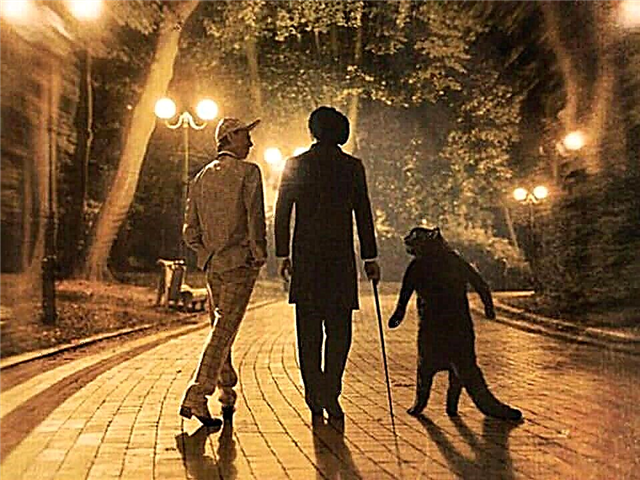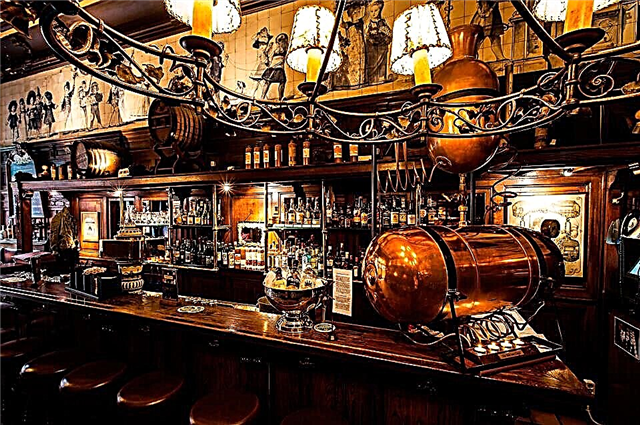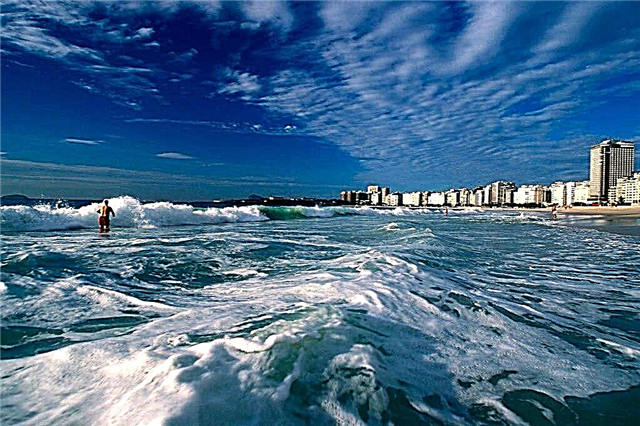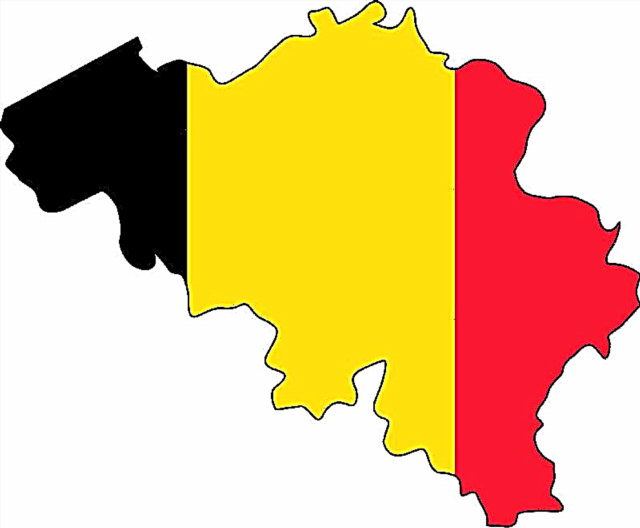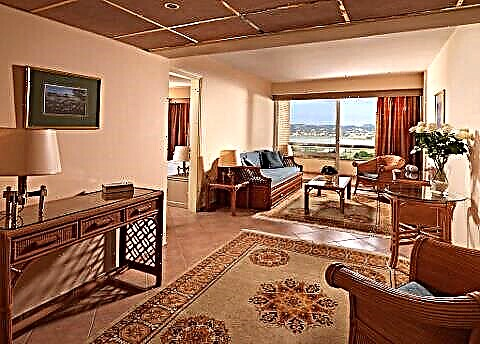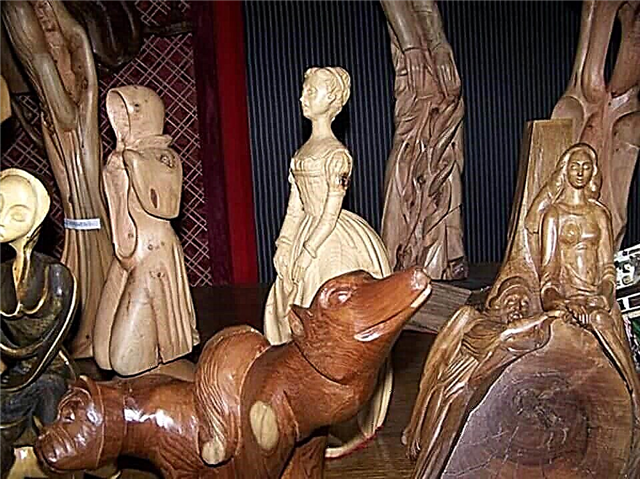Alushta is located on the southern coast of Crimea. This is a famous resort visited by numerous tourists. And everyone finds what to see in their free time on the beach. Someone goes for a walk along the ecological path. Others enthusiastically examine natural formations. Still others study the legends of ancient Taurida. The sights of Alushta leave no one indifferent.
Dolphinarium "Aquarelle"

Nobody gets bored here. Funny dolphins and seals perform unusual numbers, making the audience laugh to tears. Marine mammals play ball among themselves and with the audience, jump over the ring, ride the trainers on themselves. But that's not all. The park offers dolphin therapy courses. Children and adults can participate.
Visitors first talk to specialists. After consultation, a special program is developed that is aimed at overcoming a specific problem. Before the start of the classes, dolphins undergo individual training.
This therapy is suitable for people with increased anxiety, apathy, sleep disturbances and headaches. Sessions at the dolphinarium are a unique opportunity to relax and rejuvenate.
Dolphinarium is located on Gorky Street, 7d. Trolleybus ticket offices are an additional landmark.
Aquarium

A great place for those who love animals and are slightly tired of the sun and heat. The aquarium is located near the beach: you can visit it before or after swimming. There are quite a few marine life here. Not only a variety of fish are presented, but also snakes and turtles. The animals are kept in excellent conditions (thanks to the workers of the Aquarium).
Qualified specialists will give complete and interesting answers to the questions that arise during the examination. And if you come at a certain time (you can find it out at the checkout), you can see an interesting action: feeding.
All inhabitants consume food in different ways: some aggressively swallow their prey, others carefully try tidbits. It's nice that the administration of the Aquarium provides discounted tickets for categories of visitors. And you can pay not only in cash, but also by card and Wi-Fi.
Address: Gorky Street, 4.
Park "Crimea in miniature"

An excellent exposition for those who plan to travel further from Alushta. On a small territory, models of the most famous Crimean places are exhibited. Everything that is written in the guidebooks can be seen in reality.
True, the unique exhibits have been reduced 25 times. A leisurely walk will take 1.5 hours from the spa time. But there will be enough impressions for the whole winter. The exhibition is located in the open air, not far from the embankment. Therefore, the inspection is very comfortable.
Moving from exhibit to exhibit, guests of the city seem to move from one city to another. And there is no crowding and stuffiness. Crimea in miniature is a product of an architectural bureau located in Simferopol.
The idea of the young designers was successful: a few years later the same expositions appeared in Bakhchisarai and Evpatoria. It is interesting that by purchasing a single ticket with an open date, you can visit 3 exhibitions at once: Crimea in miniature, the Museum of Stone and the Aquarium.
Address: Gorky Street, 7, not far from the Aquarium.
National Park "Crimean"

Guests of the peninsula who wish to combine sightseeing of historical territories with a pleasant walk through the wooded mountains should definitely visit the Crimean National Park. The territory received the status of the Mining Preserve in 1896, and in 1913 the Imperial Hunt Preserve was established. The territory was so unique that numerous authorities of the peninsula retained its special status.
During the Nazi occupation, the reserve was badly damaged: forests were cut down, unique animals were destroyed, a library was looted, cordons were ravaged. After the liberation of the peninsula, everything had to start over. But the territory even increased: the Swan Islands were added to the reserve.
Today, guests are offered interesting routes:
Visit to the Kosmo-Damanovsky monastery with a trout farm. This is a monastery for men. Here you can venerate the relics, drink water from a healing spring and purchase products made by monks. The trout farm serves the freshest trout that you can catch yourself.
The reserved Crimea will take tourists along the famous Romanovskaya road. There will be stops at amazing glades where you can see rare animals. And from the observation platforms, you can see almost the entire South Coast.
The administration of the Crimean National Park is located at 42 Partizanskaya Street.
Embankment

The coastal part of the city has always been densely populated. But it was more of a port area: it began to be used for outdoor activities in 1898.
At this time, a small promenade was created along the coast. But during the NEP, the recreation area was supplemented by cafes and restaurants. The buildings were not very aesthetic and chaotic. And during the fascist occupation, almost nothing was left of the formed territory. Basically, the embankment acquired its finished appearance in the early 50s of the twentieth century.
The length of the modern embankment is about 7 km. But it is not homogeneous. It is conventionally divided into:
- Professor's Corner
- Central
- Eastern
The entire embankment is a great place for cultural recreation and a promenade. Nearby there are attractions, cafes, restaurants, the territory is tiled, planted with shady trees. And those wishing to swim can go down to the beach using convenient stairs.
Valley of Sotera

The valley is quite picturesque, but tourists love it because of its unusual figures. In fact, these are stone outliers, shaped like huge mushrooms. Tourists are interested in the very appearance of the sculptures, and geologists are interested in the processes that resulted in the appearance of the statues.
There are only 2 of them, although quite recently there were 3. But the largest, which was called the Guardian of the Valley, fell. True, geologists have discovered several more fungi, the height of which is slightly more than a meter. But the weathering processes going on in the valley make it possible for the mushrooms to grow.
Fungus cap is a hard rock slab. It is she who protects the leg from final destruction. But the leg is the most vulnerable part of the sculpture. Its composition is soil particles held together by tuff. But in wet weather (especially after prolonged rains), the leg becomes saturated with water and becomes flexible. Any mechanical impact can lead to the destruction of the statue.
The Sotera Valley is a federal nature monument. And although you can come here on your own, without a guide, all objects located on the territory should be treated with care. It is forbidden to touch, swing, try to break off a piece of mushrooms.
The valley is located along the 16th km of the P29 highway.
Ghost valley

An amazing place where exhibits change shape in front of amazed tourists! The reasons are quite natural:
- continuous weathering processes
- illumination change
That is why visitors to the valley prefer to come here for a few hours, capturing the dawn or early twilight. The sculptures were created by nature itself, but they are surprisingly similar to existing objects: the Gnome, the Lady's Bust, the Profile of Catherine the Great, the Sphinx. And the largest sculpture is 5 m in diameter and 25 m in height. It's called the Giant.
You can walk along the Valley on your own. And for lovers of outdoor activities, it is proposed to combine the inspection of the natural monument and horseback riding. An experienced guide will tell the legends of the Valley, show famous exhibits. But it is important to remember: it is worth keeping some distance from the exhibits. Sometimes small and large stones may fall.
The air is filled with aromas of Crimean pine and juniper. Guests will see the unique massifs of yew and pyracantha. There are few such forests on the planet.
The Valley of Ghosts is located in the village of Luchistoye.
Aivazovsky park

Amazing place for outdoor recreation. Rare trees and shrubs are planted here, flowers delight the eye with a variety of colors. The paths are neat, benches are placed in the shade.
Today it is an excellent example of landscape design. But it was not always so. At the end of the twentieth century, Aivazovsky Park was a neglected corner of almost wild nature.
Once a unique grape ran wild, bushes and trees looked unkempt without regular pruning. The garden was reborn in 2003. Annenkov proposed a new concept for the design of the territory.
According to its layout, new paths were laid, pseudo-antique statues and gazebos were installed. In some places there are artificial waterfalls. Everything is in perfect order. In total, more than 250 types of plantings grow in the garden. But some plants have survived from the time of stagnation.
Observation platforms have been arranged, from where a breathtaking view of the sea opens. From the mountain you can go down to the shore and swim in the gentle waters. You can walk around the garden on your own (you will have to pay to enter the territory), or you can order an excursion, during which an experienced guide will tell the history of the park's creation.
Located in the village of Partenit, sanatorium Aivazovsky.
Temple in the name of all Crimean Saints and Theodore Stratilates

This is a working temple. It was ordered to build in 1842 by Count Vorontsov, and designed by Toricelli. The temple is included in the list of cultural heritage sites of the Republic of Crimea. Tourists who first come to the city often make the mistake of mistaking a temple for a church.
The architect used many Gothic techniques. But the cathedral looks amazing: white walls set off dark, almost black, domes. Outside, the walls are decorated with colored mosaics.
The church has a miraculous icon of All Saints of Crimea. You can pray near it. And in the church shop, believers are offered crosses, church literature, incense. Nearby, in a small shop, amazing pastries are sold, delicious home-style.
Located along Vladimir Khromykh Street, 14.
Funa fortress

It is a medieval fortress located in the foothills of Demerdzhi. Today, most of the fortification remains in ruins. But according to the presented model, guests can imagine that the Smoky Fortress was once a serious obstacle for enemies.
Various options for viewing the monument are offered:
- on one's own
- horseback riding
- with excursion
From the height, where the ruins are located, mesmerizing views open up. This expiates the difficulty of a long climb. But history buffs are advised to visit this place with a guide.
The fortress is located in the village of Luchistom.
Princess Gagarina's palace

The first owner of the palace was the Crimean governor Borozdin. It was he who noted the amazing beauty of these places and began to build. And after his death, the building was bought by Prince Gagarin. But for a long time the house was empty: the prince came here only occasionally.
The general's widow, Tasso Orbeliani, rebuilt the palace. Contrary to all predictions, the marriage of the elderly Gagarin and the young Georgian princess was harmonious: the couple lived in love and harmony, though not for long.
After the death of her husband, Tasso chose to retire from the world to the Crimean estate of her husband. She decided to rebuild the house in her own way in order to turn the palace into a memory of the prince. The newly created mansion turned out to be not only cozy, beautiful, but also fabulous. Today it is considered a monument of great love.
In 1917, the Bolsheviks opened the Utes sanatorium in the nationalized palace. But the façade and interiors are mostly preserved. But during the earthquake of 1927, part of the house collapsed.
After a quality reconstruction, the sanatorium started working again. Today tourists can admire the amazing monument of great love created by a young woman.
Jur-Jur waterfall

Jur-Jur pleases tourists even in the driest summer: it is the most powerful waterfall in the region. In a second, 270 liters of water are thrown down from a cliff over 15 m high. Dzhur-Dzhur was formed on the Uzen River. Its bottom is rocky, the current is fast. As a result of natural processes, heaps of blocks and elevation changes have arisen. Dzhur-Dzhur is one of the many waterfalls of the river, but it is the most picturesque and large-scale.
Located on the territory of the reserve: entrance to the territory is paid. But the hiking trail has been cleared, steps and railings have been installed in difficult places.
Along the way, observation platforms are arranged, from which enchanting views open up. You can explore Jur-Jur on your own, or you can order an excursion.
The waterfall is located 2 km from the Generalskoe village.
We recommend the excursion: Alone with nature: Jur-Jur waterfall - take a dip in the healing baths and feel the power of nature next to the mighty waterfall
Marble cave

This is one of the most famous natural beauties in Crimea. The cave was formed as a result of the washing out of limestone from harder rocks. It was discovered only in 1987. Only a few halls are available for organized tourists. They were specially equipped, organized safe routes. A deep study of the cave requires special training.
You will have to descend to a depth of 60 m, where the temperature does not exceed +10 degrees. The inspection will take more than 1 hour, so warm clothing is essential. The cave consists of several halls, the Gallery of Fairy Tales and a hall with amazing acoustics are especially mesmerizing.
In the Gallery, stalactites and stalagmites are fancifully fused together, they resemble mystical characters. And in the acoustic one, the ceiling collapsed, so the sound began to bounce off the walls many times.
The lovers make wishes near the Kisses (the so-called stalagnates, accrete stalactites and stalagmites). The entire route is equipped with lighting, staircases with handrails. In some places, observation decks are organized.
The Marble Cave has a high rating among similar attractions. She is ranked 5th on the list. The entrance to the Cave is paid; you can visit it only with an organized excursion. It is advisable to study the safety precautions before descending. They are posted at the checkout.
Nature Museum and Arboretum

The first denrozoopark was organized in 1923. Purpose of creation: to collect to show in a small area of animals and plants that live on the peninsula. Visitors can get acquainted with the typical representatives of the flora and fauna of the peninsula in a short time.
For the purpose of environmental education, some animals are allowed to feed: this is not the case in any other reserves. Lovers of increased comfort will not find the usual amenities here. But the creators did not set such a goal. The main thing is to show visitors the virgin beauty of the Crimean nature, teach them to love and protect it.
Most plants and animals live in natural conditions. But to decorate the territory, flower beds are laid out, paths are laid out. Animals are almost not afraid of people, so you can watch adults and young animals to your heart's content. The main requirement is not to frighten the denrozo inhabitants.
For an additional fee, you can visit another interesting object: the Museum of Nature. Here are presented rich herbariums, collections of insects and local minerals, photographs and paintings of rare animals, reconstructions of the habitats of representatives of the fauna. The objectives of the exposition: to awaken the interest and love of the nature of the peninsula among visitors.
This facility is located outside the city on Partizanskaya Street, 42.
Water Disaster Museum

This is a new exhibition: it opened to visitors in 2009. Purpose of creation: to perpetuate the memory of the tragic events that accompanied the development of navigation in the world. The exhibition is located in the basement of the Church of St. Nicholas of Mirliki.
It is presented as the deck of a sunken ship.Visitors will see more than 500 artifacts that tell about the tragedies in the waters of the World Ocean. The exhibits are grouped by theme and presented in 14 rooms.
There is a small cinema in the center, which shows documentaries and films about disasters on the water. The organizers of the exhibition managed to create a complete sense of bitterness of losses from events that happened long ago (and not so long ago).
The center offers visitors interactive screens, visual materials. Talented guides tell interesting stories about all the artifacts. The exposition is interesting not only for adults, but also for teenagers over 10 years old.
The center is located in the village of Malorechenskoye, along Aleksey Dizha Street, 17. There is a parking place for tourists arriving by car.
Temple-lighthouse of St. Nicholas the Wonderworker

The temple is young: it began to be erected in 2004. The idea of construction: to serve as a beacon for Orthodox believers and to show the unity of the Crimean people with the Moscow Patriarchate. The cathedral is unusual: its height is about 60 meters.
On the facade there are cruciform niches in which the figures of the Savior and the Mother of God are installed. And the roof is crowned with a cross mounted on a ball. The ball contains a lantern, which serves as a beacon.
The bell tower of the cathedral is interesting: it is electric. The interiors are unusual for an Orthodox church: the ceilings are painted with figures of the Zodiac. The walls are decorated with panels made of precious wood. There is an icon of St. Nicholas the Wonderworker in the church, donated by Metropolitan Vladimir.
On the territory there is a gazebo in the form of a captain's bridge; nearby there is a real sea anchor. And in the basement there is the most unusual museum - water disasters. After visiting the cathedral, you should definitely go up to the observation deck. A stunning panorama of the Bear Mountain and the temple opens from above.
Seaside park

Locals are proud of this greenest corner of the city, and tourists prefer to relax here on hot days, take a walk in the evenings. The park is located near the center, so it is always crowded here.
The alleys resemble streets of green trees and bushes. Here are planted cypresses, plane trees, birches, oaks, chestnuts, which are rarely found on the peninsula. The shrubs are neatly trimmed. Some of them look like animals, birds.
Comfortable benches are placed along the alleys, gazebos are hidden in the shade. There are monuments to: the first ruler of Taurida and Maxim Gorky. In the center is the Kit Fountain. It was built at the end of the 20th century, but it is still popular with tourists.
There are attractions in the park. Children and adults will have fun here. And nearby there are cafes where you can have a tasty and budget snack.
Located on Lenin Street.
Almond Grove Water Park

The almond grove is spread over an area of 2 hectares. And there is everything for a good rest.
Guests are offered:
- VIP zone
- as many as 14 water slides
- 6 swimming pools
- 4 platforms for descent
The territory is decorated with dignity. Neat paths have been laid, shady trees have been planted, flower beds with strange plants have been laid out. To diversify the plain landscape, the designers installed rocks. There is a lot of greenery and shade on the territory.
Hungry guests can grab a budget snack without leaving the Almond Grove. In the meantime, the parents are resting, the animators will take care of the children. In such a pleasant atmosphere, the day flies by unnoticed.
Water activities are presented for every taste: they will appeal to calm guests and extreme lovers. To get to the attraction, you will have to go through growth control. Therefore, adults can be calm: nothing threatens their child.
The water park is located along Naberezhnaya street, 4a.
Museum of History and Local Lore

The museum first opened in 1923. But his fate turned out to be difficult: the center was closed and then reopened, and its funds were transferred to other organizations. But in 1971 it was reopened and finally opened. But they did not return the funds: the main part of the exposition is artifacts collected by enthusiastic public figures.
Today, visitors are offered an interesting exposition, consisting of sections:
- Archaeological. Finds of southern Crimea from ancient times to the 18th century are presented here.
- The formation of the Crimean Khanate and the Russian-Turkish wars. This section displays documents, photographs, engravings from the historical period. Separately, the event of the annexation of Crimea to the Russian Empire is highlighted.
- Alushta under the crown of the Russian Empire. The events taking place during the formation and development of the city are reflected.
In total, the center has collected about 10,000 items. Personal belongings of honorary citizens, documents, photographs are presented. An interesting collection of postcards of the pre-revolutionary period of the city's development, which belonged to Vasiliev. Children stand for a long time near the windows of the numismatic department.
The center is located on Lenin Street, 8.
Monument to the partisans of Crimea

The partisans of the Crimea have been striking the enemy since November 1941. the detachment was based in the mountains, in the protected tract Uzen-Bash.
People's avengers fought against the Nazis until the liberation of the peninsula in 1944. They took part in the rescue of the Yalta port, Alupka and Livadia palaces and Massanda cellars, liberated Yalta together with the troops of the Soviet army.
Many of the partisans died in the fighting, others were captured and executed after being tortured. But their names are remembered by descendants: in 1981, a monument was erected in honor of the 40th anniversary of the partisan movement. The names of the heroes and the words of the partisan oath are engraved on it.
The monument is located on the 5th kilometer of the Alushta-Yalta highway.
Chernovsky Stones

A very picturesque place, loved by all guests: both those who love history and those who are interested in diving from the cliff. Some speculate that the stones were once part of Mount Castel. Today these are two parts of a once huge boulder.
The rift is right in the middle. And the name is given by the name of the Elabuga merchants Chernovs, who built their estate not far from the attraction.
Once the stone was one and used as an altar. On it, the priestess Iphigenia killed everyone who accidentally (or intentionally) entered Tauride land. Iphigenia became a priestess against her own will: every time she sobbed on a stone after the bloody ritual and prayed that fate would become more favorable to her. And so it happened: Iphigenia's brother sailed and took her to Greece.
Since then, it is believed that the stone helps people who want to change their destiny. But at the same time, thoughts must be pure, otherwise the stones will not understand the request.
For those who do not believe in legends, the stones are just a beautiful part of the beach. The waves beat beautifully through the crack, and the sea nearby is gentle and clean.
Chernovsky stones are located in the Professor's Corner, next to the Calypso Hotel.
House of the merchant Stakheev

The house was built according to the project of the famous Krasnov. The architect gladly accepted the order: Stakheev was known far beyond the Crimea as a patron and trustee. The mansion is built in a complex style: Art Nouveau is connected by classical techniques of European building.
The work lasted 3 years, then landscape architects equipped the park. The difficulty was that it was required to fit the conceived into the already existing landscape.
This technique allowed to preserve the amazing plane trees, the oldest of which is more than 300 years old. In addition, shrubs and flowers were planted, shady corners were created. Part of the created park can be seen walking through the territory of the Primorsky Park: it was part of the estate. Stakheev.
After the completion of the work, celebrities came to visit the merchant. Shishkin lived here for a long time. After the October coup, the dacha was immediately transferred to the children's center.
Subsequently, she was regularly repaired, so her condition is satisfactory. But, unfortunately, you cannot go inside: a children's center is still operating in the mansion. And you can see the merchant's dacha if you enter the Primorsky Park from the central entrance.
The house of the merchant Stakheev is located on Perekopskaya street, 1.
House-Museum of I.S. Shmeleva

The center is located in a small adobe house with a slightly raised roof in the middle. The Russian writer Shmelev lived there from 1918 to 1922. This house was built by the Architect Beketov.
The writer dreamed of a quiet, peaceful life on the peninsula. But these hopes did not come true: it was in the Crimea that Shmelev saw a terrible famine in 1921, survived the civil war.
Visitors will see authentic things of the writer, photographs, furniture. Separately, the stage of work on the book The Sun of the Dead is presented, in which Shmelev spoke about the tragic events of 1921. The center is interesting for tourists interested in the work and life of the writer.
Address: Naberezhnaya street, 2.
Yukhary-Jami Mosque

This is a working mosque. It was built in the 19th century: Yukhary-Jami is the only mosque on the peninsula that has survived from those times. The mosque has a difficult fate. After the October coup, it was closed and handed over to various services.
Gradually, the building fell into decay, wooden carvings were destroyed, wall paintings disappeared. But in 1986 it was given the status of an architectural monument of the 19th century of republican significance.
From that moment on, the building was under state protection. But in 1994, the mosque was returned to the Muslim community. After that, her restoration began with donations.
In 1996, the first prayer was held in Yukhary-Jami. And later the minaret was also built. Yukhary-Jami is the only active mosque in the district. It is located on Verkhnyaya street, 9.
House-Museum of Brownies

This is a small private center: it was founded by a married couple Nikonorovs. They performed all the exhibits on their own. Guests can purchase any statuette they like. The center is full of mysticism: for some tourists, photographs disappear, for others, the pictures are spoiled, and some guests cannot enter. Probably, this is being played by the numerous brownies who have settled at the exhibition.
The house-museum of brownies is located in the village of Zaprudny, along Yuzhnaya street, 6.



